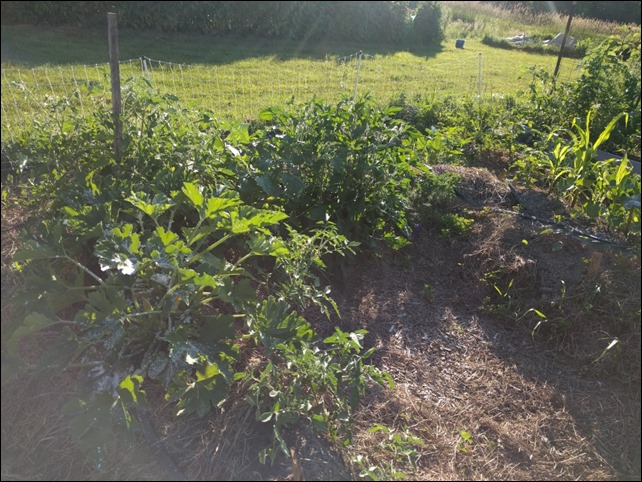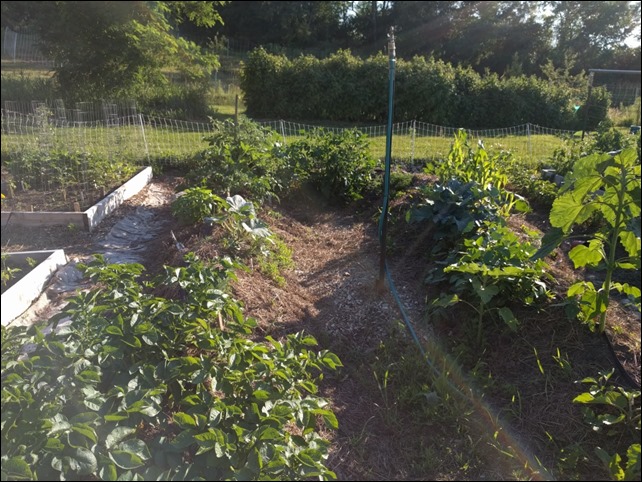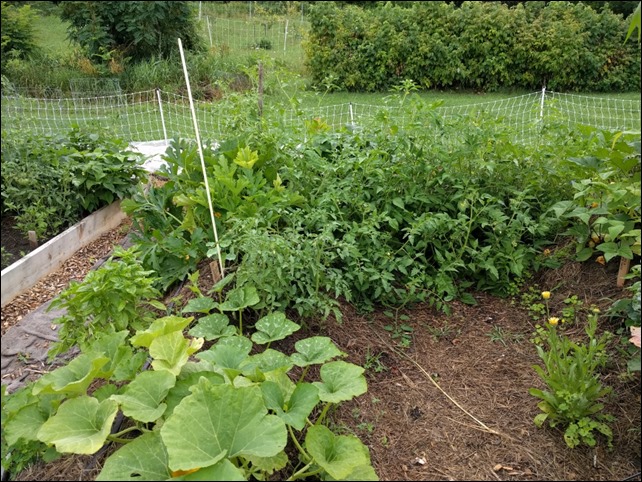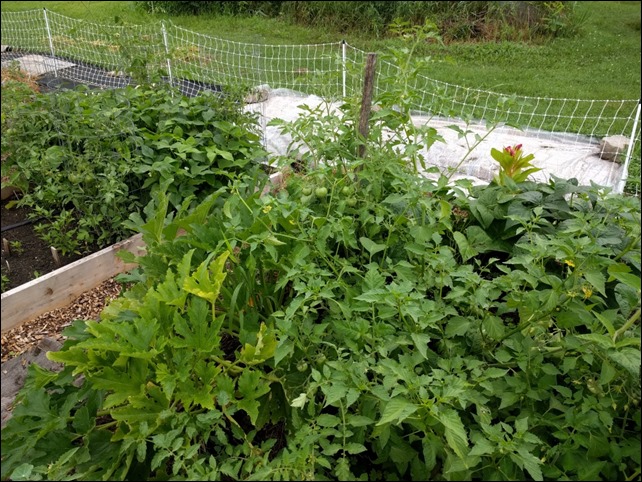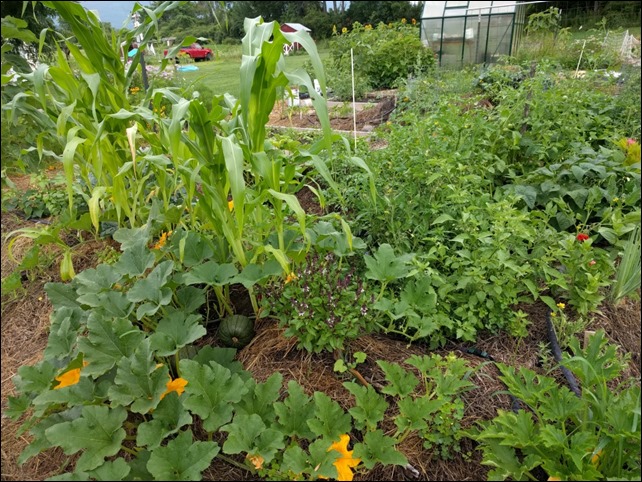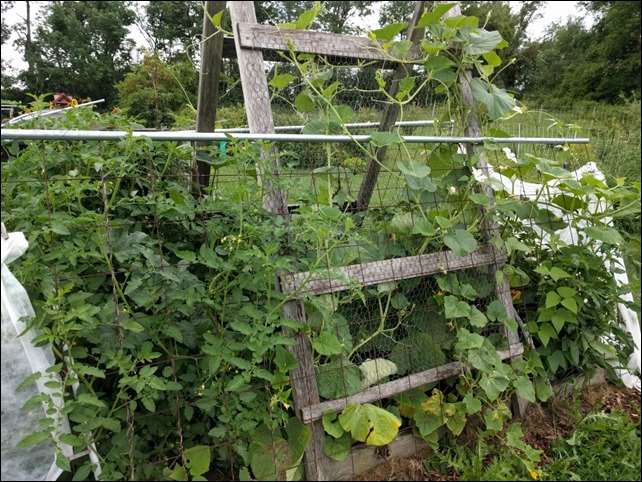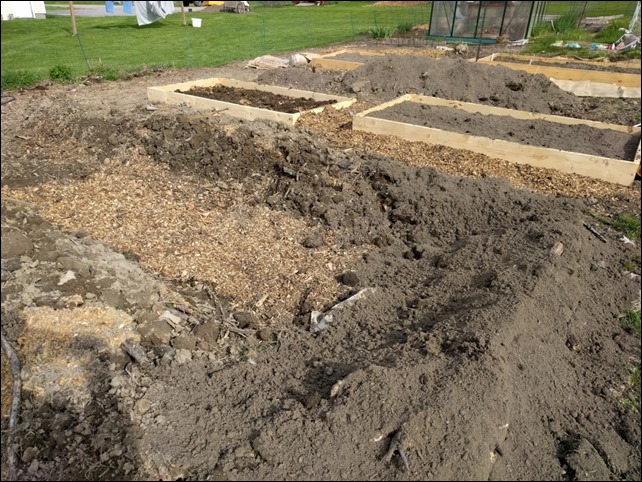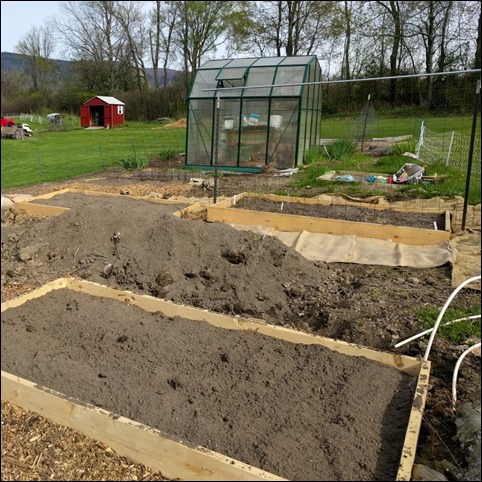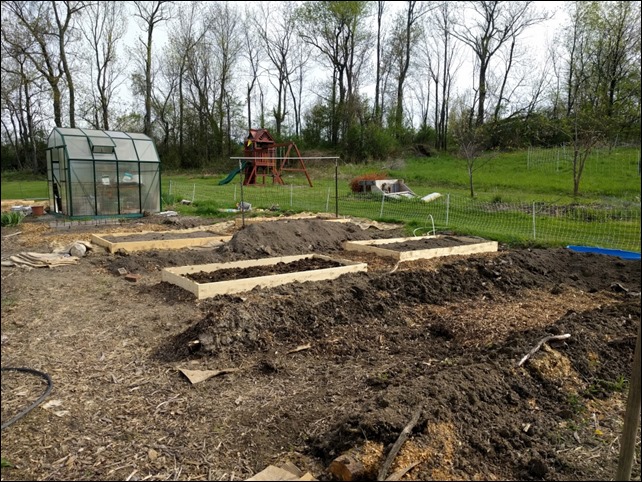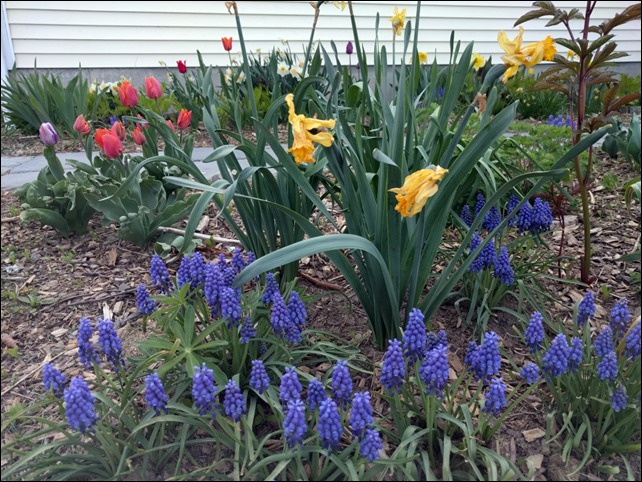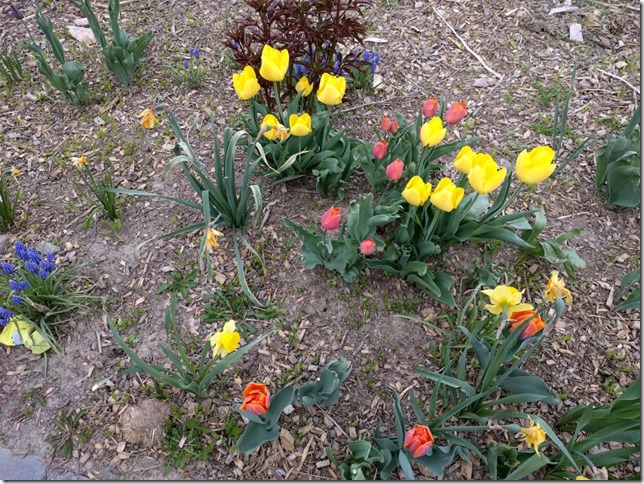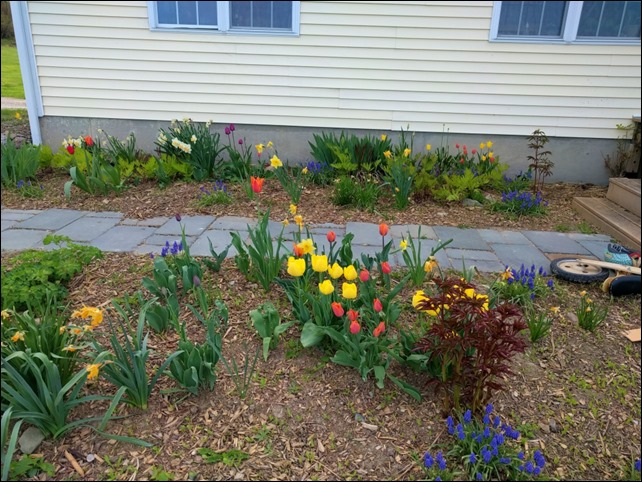I’m hoping to start blogging a bit more this year as we are making some changes in our approach. I want to share what we are doing and try to document how well it works.
First some background. When we first bought this property, we were really anxious to get rolling on large-scale gardening and so we carved a couple of large garden spaces out of the lawn/pasture. We thought it would take a few years to get soil fertility and workability up, but then things would start to click. However, we have discovered there are a couple of flaws in that assumption.
The first challenge is the heavy clay on much of the property that is common in this area. It’s fertile soil and holds onto nutrients well, but is very difficult to work with unless the moisture levels are correct. Except in uncommon years, the moisture levels are almost never “correct” here. In the spring the ground is super saturated, which delays planting, causes seeds and seedlings to rot and allows weeds to take hold. In the summer, things dry out and then the soil turns into hardpan that holds onto rhizomic grasses and other weeds and is hard to work.
The second challenge is the huge amount of spring water in general. In a good year we don’t start drying out until mid-June. Last year the whole month of June was bad. We planted corn three times and never really got a great crop. My beautiful tomato seedlings (best I’ve ever started) never had dry enough roots and so they either died, got infected or took a long time to get started. We did a lot of work the first few years to improve drainage and add swales to direct water away. It has helped a bit, but not enough.
So we’ve decided to transition to more of a permaculture approach. We are switching over the garden behind our house to a series of raised beds and hugelcultur mounds. Our front garden plot is going to have a few raised beds for plants like watermelon and pumpkins, but we’re mostly going to just cover it in a deep layer of wood chips, manure and other organic matter and try to build up the soil. We’ll probably plant some cover crops, but maybe not much more than that. We are hoping this will help us to focus our soil building efforts by building up organic material in the raised beds and mitigate some of the moisture issues with the hugelcultur mounds. We also hope this will allow us to keep weeds under control a little better or at least make them easier to pull. This will also involve primarily using a no-till, deep mulch approach in most of our growing areas.
In addition, we are going to continue to plant more perennial food plants (mostly fruits, possibly some nuts) and hopefully get the first round of trees planted for our wind/noise break. I would still really love to get some mushroom cultivation going as well. So far that has been mostly a failure, but we’ve met some folks that are doing it successfully. So hoping to get a bit of mentoring this spring. I’m clearing some of the brush out of the small woody areas on the edges of our property, so thinking moving mushroom logs under the canopy might work better. We’ll also use the rotten logs and leaf debris for our hugelcultur mounds and chip a lot of the brush to use as organic matter as well.
As usual, gardening seems to be one long experiment, but it does scratch the optimization itch in the way my mind works. In all this we are hoping to get to a place of less work and more production. Or at least the more “fun” work of gardening instead of spending most of the time trying to stay ahead of the weeds.

